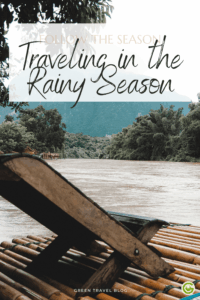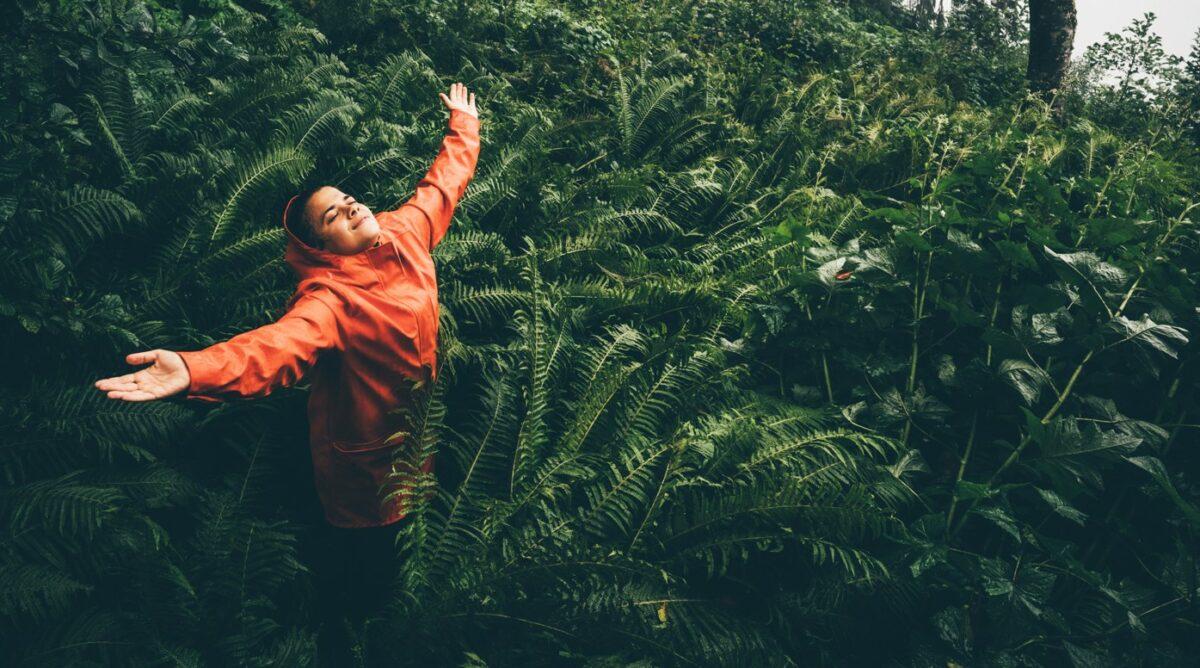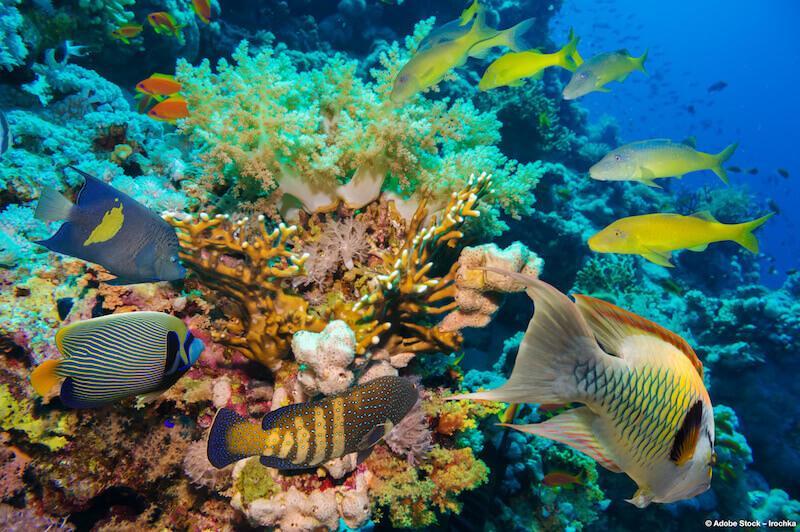The summer heat shimmers outside, our lawn is scorched, and the earth is dry as dust. Then, I receive an email from Nepal: “The monsoon has just started here, and everything is green.” For a moment, my mind was somewhere else. Surrounded by glowing rice fields, steaming earth, and dripping leaves. A world that breathes. While forests in Europe are withering away, as in the Harz Mountains, South Asia is sinking into lush greenery.
Lush greenery instead of dusty heat
The thought wouldn’t leave me. Why are we so quick to view the rainy season as a disadvantage when it may be the most beautiful time to travel? Not only that, but it’s also more sustainable because you’re usually away from the crowds of tourists. So, you get less crowded sights, lower prices, and pure nature. That’s why I asked people in our network what traveling during the rainy season is really like. First up is Cambodia.
“Deodorant is useless” — rainy season in Cambodia (June–November)

“The rainy season in Cambodia is fantastic,” says Valentin Pawlik. He runs the Canvas & Orchids Retreat in the Cambodian rainforest with his wife, Anna. Here, you can stay in tent villas on floating platforms right on the river. Surrounded by lush greenery — especially during the rainy season.
The arrival of the monsoon season brings not only rain to Cambodia but also new life: landscapes are transformed into verdant oases, rivers swell, rice fields are replanted, and wild animals return. “Anyone who has never experienced monsoon rains should definitely do so—they’re incredible,” enthuses Valentin.
As a rule, it only rains for a few hours a day, and it’s pleasantly warm even then. Afterwards, the weather is calm and fresh. “Angkor Wat in the rain is magical,” he continues. “Sometimes it’s worth getting wet.” There’s also no need to pack deodorant — the heat and humidity render it completely ineffective!
The rainy season is the best time for taking photos!
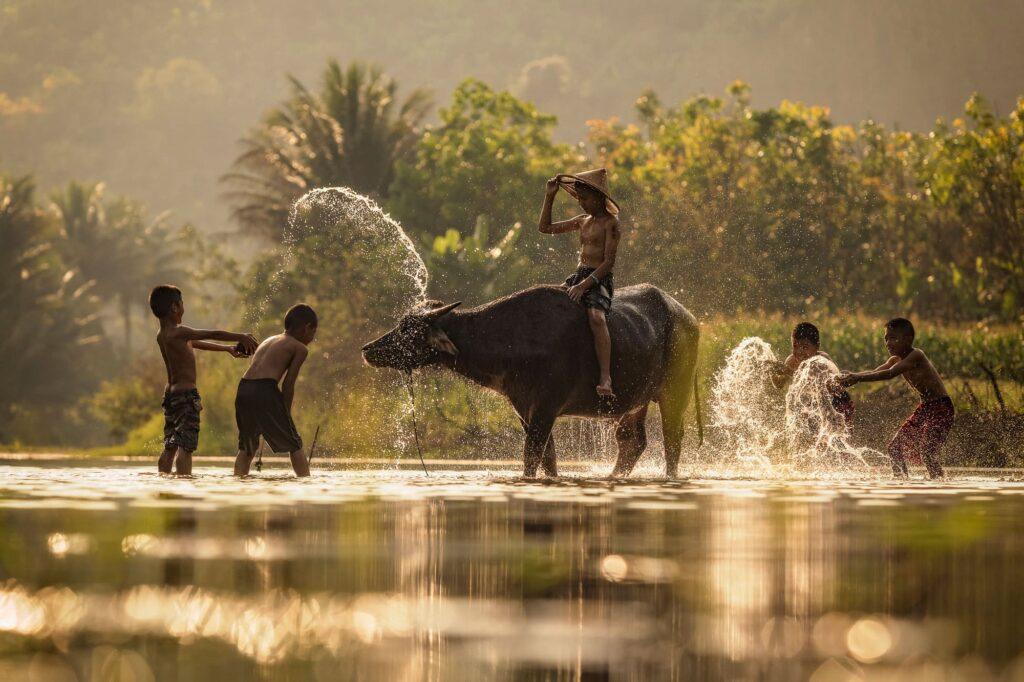
Incidentally, the rainy season is a well-kept secret among photographers. Valentin explains, “The light is clearer, the sky is more exciting, and the colors are more intense.” That’s why it’s the best time to take photos. With a little luck, you might even capture some of the unique wildlife.

Bonus tip: Attend a yoga retreat near Angkor Wat
When visiting Angkor Wat, consider combining your trip with a wonderful *three-day yoga retreat, which includes authentic yoga, spa treatments, sound healing, and modern fitness activities.
The retreat at the Angkor Grace Residence & Wellness Resort offers classes in English for both beginners and advanced practitioners.
Challenges posed by the monsoon
Of course, the rainy season brings its own set of challenges. Flooding can occur in rural areas, some accommodations close for the off-season, and travel in the countryside sometimes takes longer. “It used to be difficult to travel during the rainy season because of poor roads and broken bridges,” Valentin explains. “But today, the main connections are well developed, and many of the concerns mentioned in old travel guides are outdated.”

The impact of climate change on the monsoon season
However, climate change could soon cause new problems. In this article, Greenpeace explains how the climate crisis is disrupting the monsoon cycle. The Indian Ocean is warming, dry seasons are lengthening, and rainy seasons are becoming more unpredictable. These changes mean that future rainy seasons will probably be different.
Monsoon season in Nepal (June to September) – accompany the locals during the rice harvest
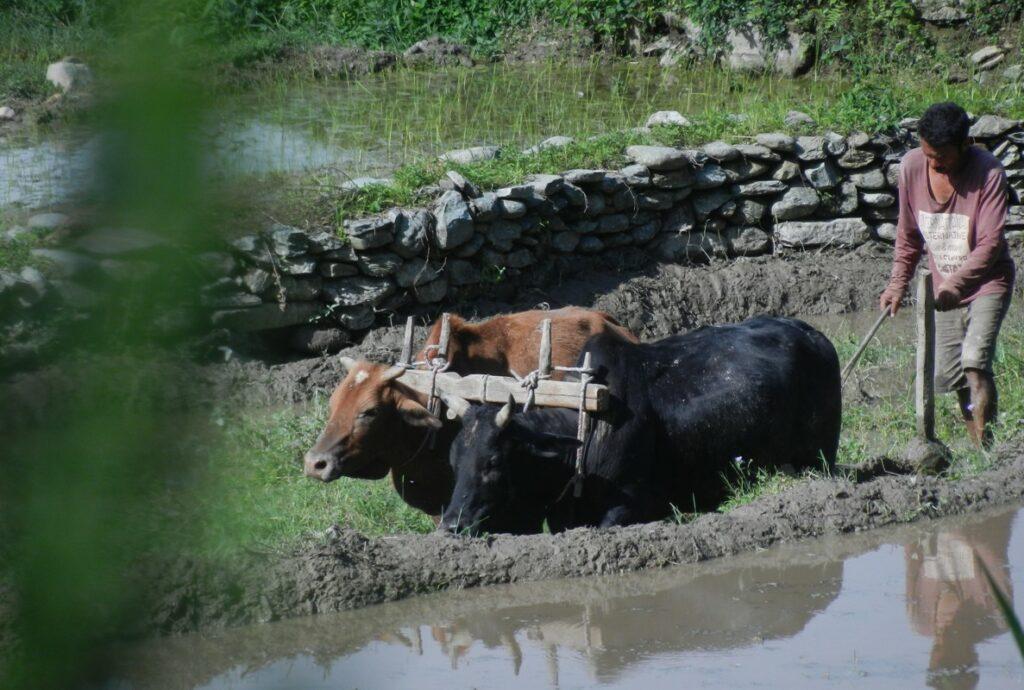
Rajiv Desraj Shrestha, the general manager of The Pavilions Himalayas – The Farm, raves about the rainy season in his homeland.
„The landscape comes to life with its rice terraces, misty mornings, and colorful flora. The ever-changing view from your villa is like a living painting that touches the soul.“ – Rajiv
From mid-June to the end of September, the monsoon season brings new life to the hills around Pokhara. Wafts of mist drift through the valley, lush green rice terraces cascade down slopes, and the air fills with the scents of wet earth and sprouting plants.
From mid-June to the end of September, the monsoon season brings new life to the hills around Pokhara. Wafts of mist drift through the valley, lush green rice terraces cascade down slopes, and the air fills with the scents of wet earth and sprouting plants.
A special highlight during this time is the traditional Ropain Festival, which marks the beginning of the rice harvest (dates: June 29, 2025; TBD, June 2026). The festival is celebrated in various ways, but if you want to post an authentic Instagram photo, you’ll need to be covered in mud by the end of the day. 🙂
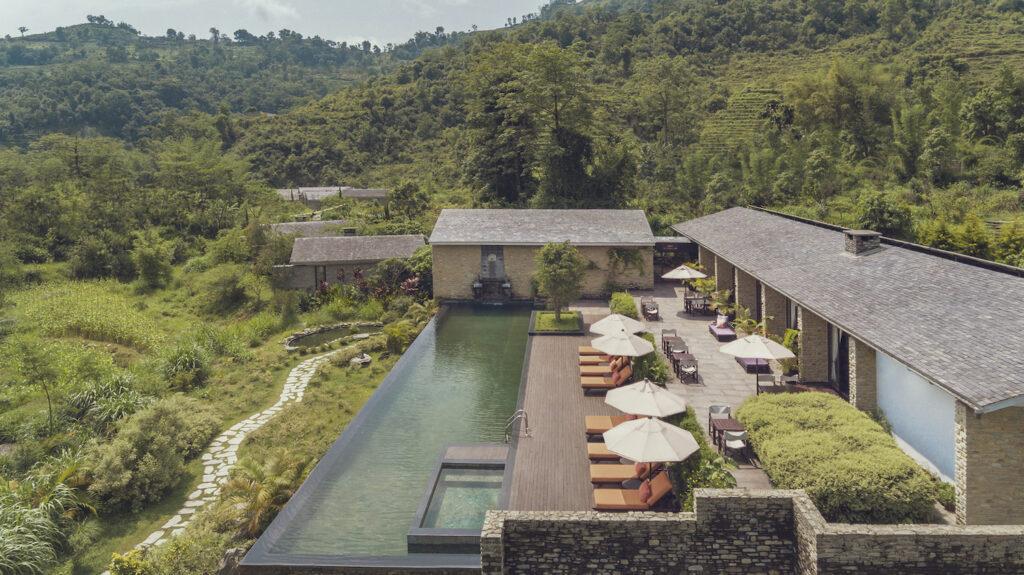
At the award-winning, eco-friendly, charitable hotel The Pavilions Himalayas – The Farm, the connection to local agriculture and the switch to organic production play a special role.
Read this article to learn more about the resort’s unique history.
If you’d like, you can lend a hand around the resort by wading barefoot through the soft, wet soil and planting rice seedlings alongside the farmers.
Maldives and rain? Definitely a sign to get in the water!
“Why would you care about rain underwater?” That’s how our partners at Gili Lankanfushi sum it up. If you’ve ever dreamed of encountering whale sharks and manta rays while diving or snorkeling, now is the perfect time.
From May to November, during the southwest monsoon, huge quantities of plankton gather in Hanifaru Bay in Baa Atoll — and the giants of the sea love it. As many as 200 manta rays and 20 whale sharks have even been spotted here in a single day. Snorkelers can get an up-close-and-personal view of them. So make sure not to miss this true natural spectacle, which only occurs during the rainy season.
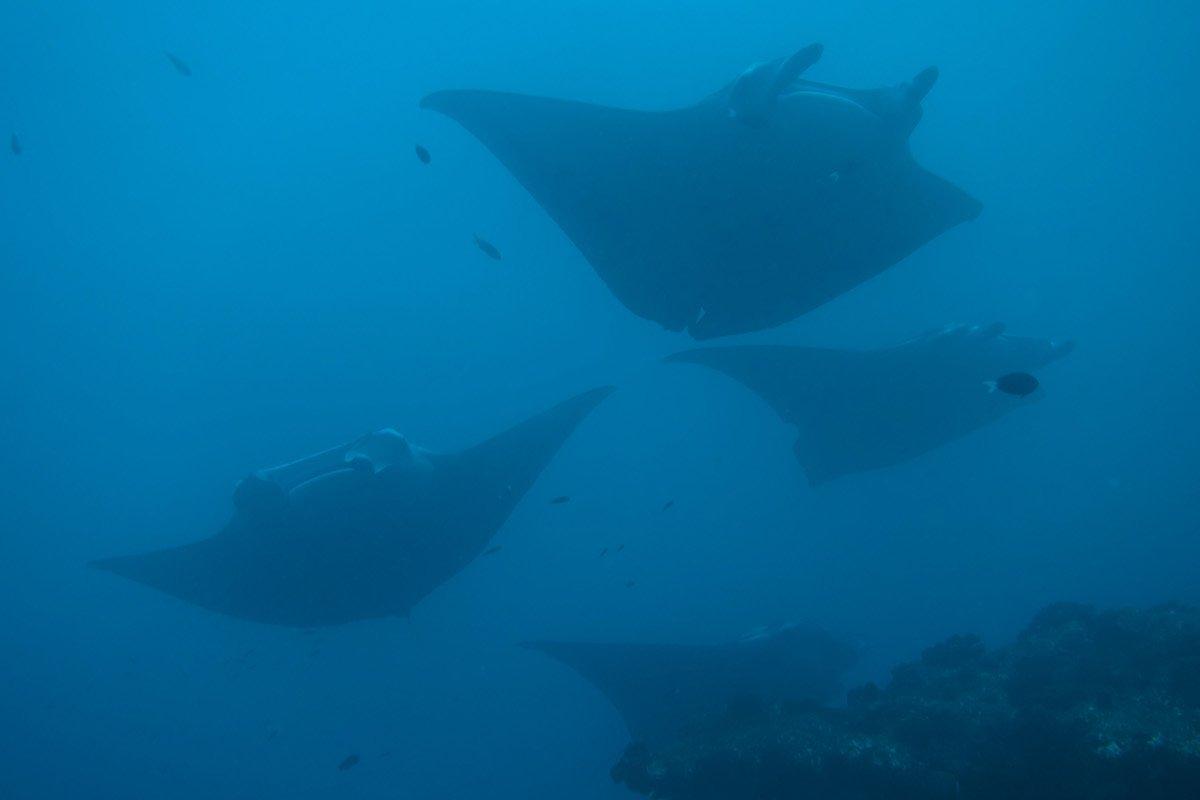
Info: Sharks are an endangered species worldwide. As the WWF points out, sharks are at the top of the underwater food chain. Therefore, an imbalance in their population affects all other marine animals. Therefore, before booking a tour, find out about your tour operator’s sustainability practices. Learn the correct behavior on the boat and in the water. Keep your distance, and treat all animals with respect above and below the water. If you are unsure whether your chosen operator complies with animal welfare standards, cancel the trip.
At Gili Lankanfushi, you will stay in luxurious water villas — perfect for jumping straight into the lagoon after a dive or enjoying a warm rain shower on your terrace. The sustainable Green PearlsⓇ resort is actively committed to protecting coral reefs and works with local marine biologists. Guests can take guided tours, learn about endangered species, and even help plant coral.
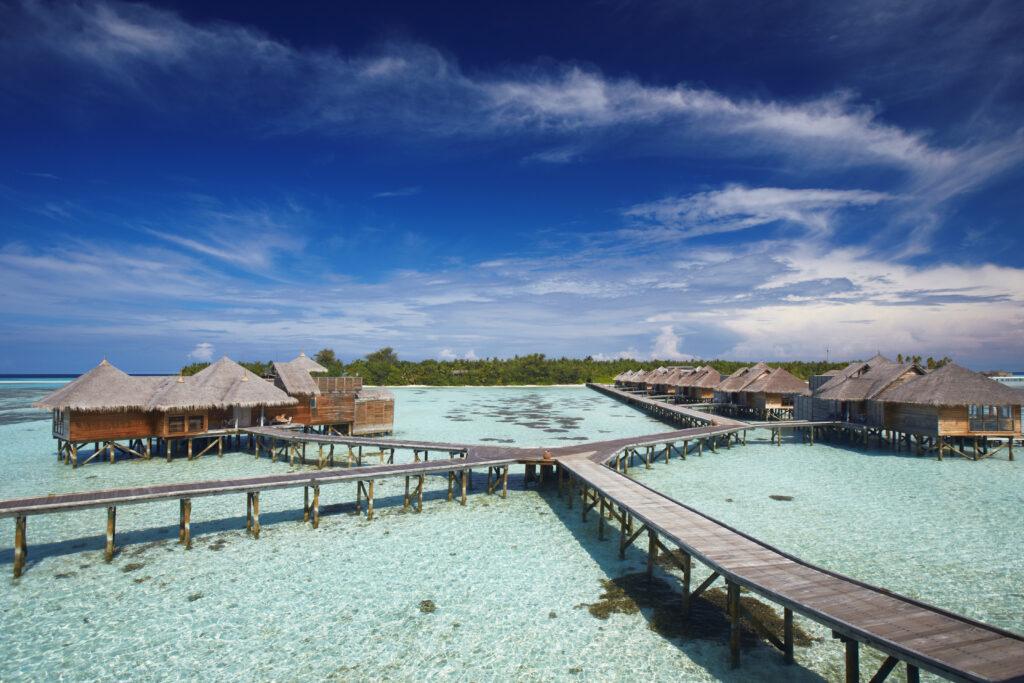
Tip: Eight-day diving camp with tiger sharks — for experienced divers only!
Are you a certified diver looking for an authentic adventure (minimum AOWD or equivalent)? If so, this eight-day diving camp on Fuvahmulah Island could be just what you’re looking for! Removed from commercial tourist diving spots, Fuvahmulah is considered one of the last wild tiger shark hotspots. During the six-day diving portion of the camp, you can expect three dives each day with experienced, English-speaking guides. Information about the camp and booking can be found here: *8-Day Fuvahmulah Tiger Shark Diving Trip.
Experience Peru during the rainy season – between jungle rain and magical mist

Amazon rainforest: Wildlife watching in the rhythm of the water’s flow
There is no distinct dry season in the Peruvian Amazon. The daily cycle of evaporation and rainfall ensures that this area—one of the most species-rich habitats on Earth—thrives. However, the rainy season, which is from November to April, brings more frequent and intense rainfall. This is the ideal time for wildlife watching, as monkeys, caimans, sloths, and countless bird species come to the riverbanks in search of food.
Of course, paths can sometimes be impassable or very muddy. But I mean anyone traveling to the jungle is probably looking for adventure anyway and will be rewarded with lush greenery, spectacular sounds, and a unique nature experience.
Tip: Inkaterra Reserva Amazónica, a sustainable jungle lodge in the heart of the Amazon lowlands on the banks of the Madre de Dios River, offers direct access to a spectacular network of high rope bridges where you can safely walk through the treetops. Their experienced guides are always on hand to point out things you might otherwise miss.
For more information on preparing for your trip, including vaccinations and packing lists, check out our article on sustainable jungle adventures in the Amazon.
A mystical cloud forest instead of tourist crowds – the rainy season in the Andes
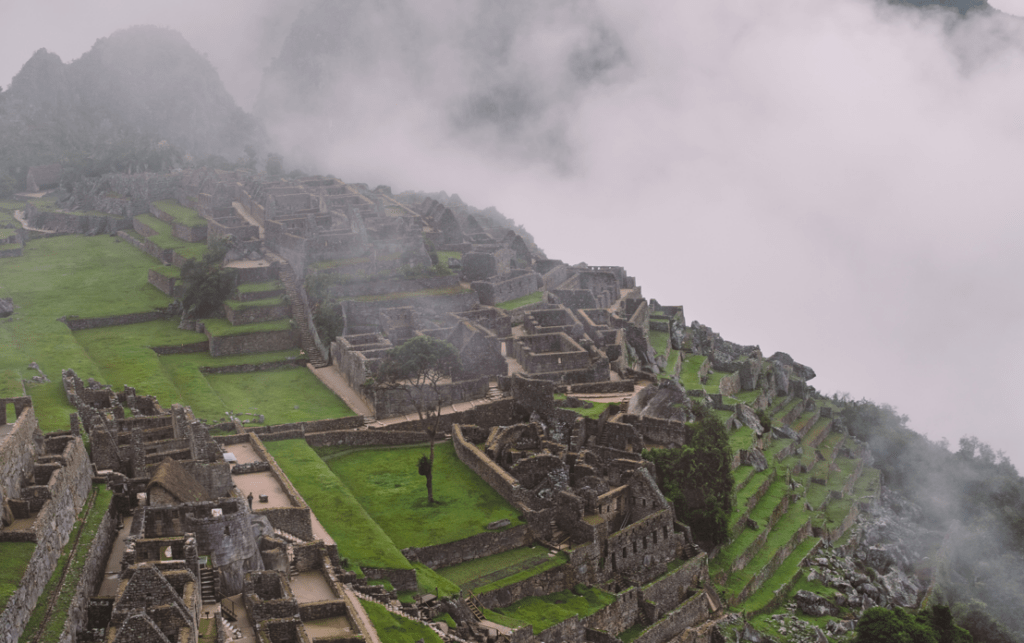
Above all else, the rainy season in the Peruvian Andes means one thing—fog. This gives places like Machu Picchu an almost mystical atmosphere. Many travelers prefer to visit during the dry season from June to August when large crowds are common. However, traveling during the off-season (October to March) is quieter and cheaper.
Incidentally, our Green PearlsⓇ partner, the Inkaterra Machu Picchu Pueblo Hotel, is helping to reforest the cloud forest. The multi-award-winning hotel now stands on land that was once barren. In the 1970s, Inkaterra founder José Koechlin started planting trees here. It took 15 years for the cloud forest to return, along with birds, butterflies, and wild orchids. Today, over 300 bird species, 372 native orchid species, and 98 fern species can be found around the hotel, which has become a refuge.
Conclusion: The rainy season is a natural wonder that guarantees adventure
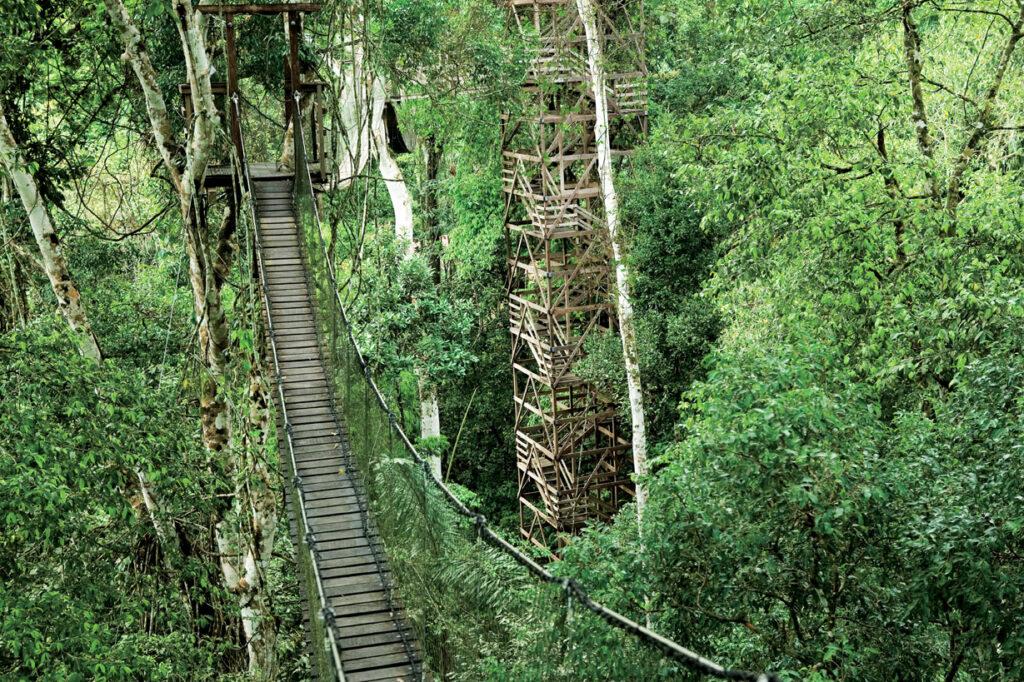
The rainy season is one of the most fascinating natural phenomena on Earth. As part of a global weather system, it gives life; however, it is increasingly being thrown out of balance by the climate crisis. Travelers who visit during this time will experience lush green landscapes and a deeper connection to nature and the local people.
But keep in mind that a vacation during monsoon season is not for those who prefer to relax on a beach chair or indulge in luxury—it challenges you, amazes you, sometimes requires a little improvisation, and, above all, helps you grow. However, with experienced local guides and hosts at your side, you will be well prepared for your rainy season adventure.
Here’s one last tip from Valentin in the Cambodian rainforest: When it rains, the locals wear flip-flops; however, you should opt for lightweight yet sturdy trekking shoes. Your feet will get wet, but you’ll stay sure-footed.
FAQ: Frequently asked questions about traveling during the rainy season
1. Is it dangerous to travel during the rainy season?
No — at least, not necessarily. The infrastructure in many countries is much better today than it used to be. Valentin from Canvas & Orchids Retreat in Cambodia explains, “The road network has improved enormously in recent years. In the past, you could get stuck for days when it rained heavily — today, that’s no longer an issue.”
The important thing is to be flexible when traveling during the rainy season, learn about the region’s characteristics in advance, and have experienced local guides with you.
2. Which animals are particularly visible during the rainy season?
Many regions have especially good animal-viewing opportunities during the rainy season:
- Amazon, Peru: Higher water levels bring many animals closer to shore. There is a good chance of seeing monkeys, sloths, caimans, and rare birds.
- Cambodia: With a little luck, you can observe langurs, kingfishers, and water buffalo – often found near eco-resorts.
- Maldives: From May to November, large quantities of plankton gather in Hanifaru Bay, which attracts manta rays and whale sharks. Snorkelers can get amazingly close to these creatures.
3. What effect has climate change on the rainy season?
Climate change is disrupting the balance of the seasons — including the monsoon. Greenpeace explains that the rainy season has changed in many regions. “The rising temperature of the Indian Ocean is decreasing the intensity and regularity of the monsoon, while also making extreme heavy rainfall more frequent.” Consequences include longer dry spells, unpredictable rainfall, landslides, and flooding, especially in regions such as India, Bangladesh, and Pakistan.
4. How much does it rain during the rainy season?
Depending on the region, this can vary greatly. It is usually not continuous rain, but rather heavy showers, which often occur in the afternoon or at night. Sometimes these showers last several hours.
- In Cambodia, the rainy season lasts from May to October, with rain typically falling for one to three hours per day.
- In the Peruvian Amazon, it rains frequently, but the rainy season with particularly heavy showers lasts from November to April.
- In the Maldives, it rains more frequently during the southwest monsoon (May–October), but it is usually warm and sunny in between showers.
*For offers marked with an asterisk, we receive a commission if you book the offer. Of course, there are no additional costs for you!
Save this article on Pinterest as an inspiration for your next journey.
